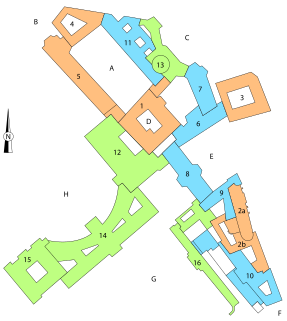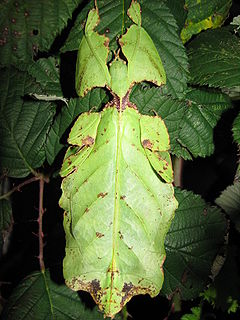Johann Carl Megerle von Mühlfeld was a scientist and zoologist who lived from 1765 to 1842.
He worked at the Vienna natural history museum, the Naturhistorisches Museum, Wien, until he retired at the end of 1835..

Vienna is the federal capital and largest city of Austria, and one of the nine states of Austria. Vienna is Austria's primate city, with a population of about 1.9 million, and its cultural, economic, and political centre. It is the 7th-largest city by population within city limits in the European Union. Until the beginning of the 20th century, it was the largest German-speaking city in the world, and before the splitting of the Austro-Hungarian Empire in World War I, the city had 2 million inhabitants. Today, it has the second largest number of German speakers after Berlin. Vienna is host to many major international organizations, including the United Nations and OPEC. The city is located in the eastern part of Austria and is close to the borders of the Czech Republic, Slovakia, and Hungary. These regions work together in a European Centrope border region. Along with nearby Bratislava, Vienna forms a metropolitan region with 3 million inhabitants. In 2001, the city centre was designated a UNESCO World Heritage Site. In July 2017 it was moved to the list of World Heritage in Danger.
He took care of the minerals and part of the Mollusc Collection, working with Andreas Xaverius Stütz. They carried out a task that all the other co-workers had avoided until then, which was the inventory-taking of specimens from the geosphere.
Mergerle von Mühlfeld organized the Natural History Collection and became a custodian in 1797. In 1806 the museum purchased his collection of European insects, and he became the first curator of insects. He organised the purchase of the Gundian collection of European butterflies.
The old collections, including his specimens, were destroyed in October 1848 during a Hofburg fire. [1]

The Hofburg is the former principal imperial palace of the Habsburg dynasty rulers and today serves as the official residence and workplace of the President of Austria. It is located in the center of Vienna and was built in the 13th century and expanded several times afterwards. It also served as the imperial winter residence, as Schönbrunn Palace was the summer residence.
Among the taxa Mergerle von Mühlfeld described are:
- Melolontha pectoralis , a kind of cockchafer beetle
- The bivalve genera Angulus , Chione and Corbicula , all in 1811
- The snail species Helix perspectiva in 1816 (now known as Discus perspectivus ).

Chione is a genus of American tropical marine bivalve molluscs, in the family Veneridae.

Corbicula is a genus of freshwater and brackish water clams, aquatic bivalve mollusks in the family Cyrenidae, the basket clams. The genus name is the New Latin diminutive of Latin corbis, a basket, referring to the shape and ribs of the shell.
Discus perspectivus is a species of small air-breathing land snail, a terrestrial pulmonate gastropod mollusk in the family Discidae, the disk snails.
The brachiopod genus Megerlia King, 1850 is probably named after him, as well as the odostomiine snail species Odostomia megerlei Locard, 1886.

Brachiopods, phylum Brachiopoda, are a group of lophotrochozoan animals that have hard "valves" (shells) on the upper and lower surfaces, unlike the left and right arrangement in bivalve molluscs. Brachiopod valves are hinged at the rear end, while the front can be opened for feeding or closed for protection. Two major groups are recognized, articulate and inarticulate. The word "articulate" is used to describe the tooth-and-groove features of the valve-hinge which is present in the articulate group, and absent from the inarticulate group. This is the leading diagnostic feature (fossilizable), by which the two main groups can be readily distinguished. Articulate brachiopods have toothed hinges and simple opening and closing muscles, while inarticulate brachiopods have untoothed hinges and a more complex system of muscles used to keep the two valves aligned. In a typical brachiopod a stalk-like pedicle projects from an opening in one of the valves near the hinges, known as the pedicle valve, keeping the animal anchored to the seabed but clear of silt that would obstruct the opening.

Odostomiinae, Odostomia snails and their allies, is a taxonomic subfamily of minute parasitic sea snails. These are marine heterobranch gastropod mollusks, or micromollusks, in the family Pyramidellidae.

A snail is, in loose terms, a shelled gastropod. The name is most often applied to land snails, terrestrial pulmonate gastropod molluscs. However, the common name snail is also used for most of the members of the molluscan class Gastropoda that have a coiled shell that is large enough for the animal to retract completely into. When the word "snail" is used in this most general sense, it includes not just land snails but also numerous species of sea snails and freshwater snails. Gastropods that naturally lack a shell, or have only an internal shell, are mostly called slugs, and land snails that have only a very small shell are often called semi-slugs.
His manuscripts are held at the Staatsbibliothek zu Berlin.











